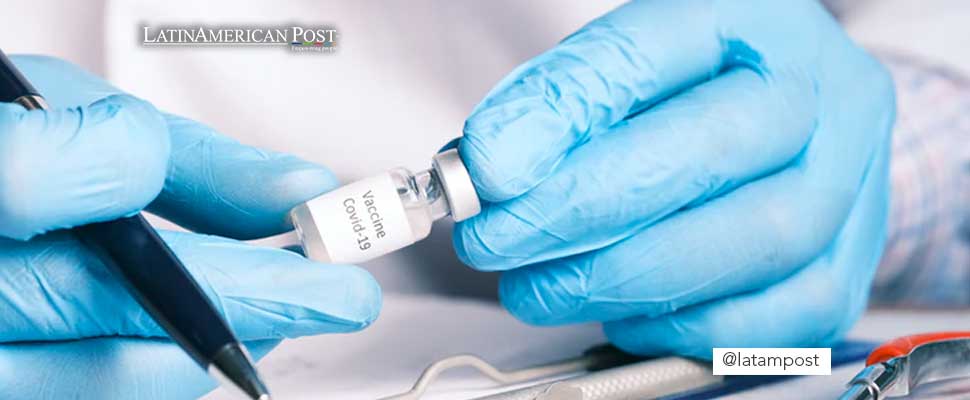COVID-19: How Expensive Will the Third Dose be for Latin American Countries?
Although the WHO has not yet confirmed its need, several countries have already decided to take action on the matter and quote the third dose.

The coronavirus pandemic continues in the world despite the vaccination programs that for almost 10 months have been working in most of the countries on the planet. Photo: Unsplash
LatinAmerican Post | Christopher Ramírez Hernández
Listen to this article
Leer en español: COVID-19: ¿qué tan costosa saldrá la tercera dosis a los países latinoamericanos?
The coronavirus pandemic continues in the world despite the vaccination programs that for almost 10 months have been working in most of the countries of the planet. According to data provided by Johns Hopkins University, as of September 7, slightly more than 221 million cases of coronavirus infection have been reported, of which 4 and a half million have died.
In the case of the American continent, more than 85 million people have been infected, with a balance of more than 2 million deaths, according to figures from the Pan American Health Organization. Latin America has reported 1.3 million deaths in the midst of the pandemic.
However, it seems that the pandemic is going faster than the vaccination processes in the region. It should be remembered that, according to the World Health Organization (WHO), at least 60% to 70% of the total population of a country should have the complete vaccination schedule to achieve what is known as “herd immunity” or “ herd immunity ”. Although there are also other new calculations that ensure that due to the new variants, herd immunity will come much later.
Now, in Latin America, the Society of the Americas / Council of the Americas (AS / COA), assures that only two countries would have achieved such immunity: Chile and Uruguay, the first with 70.2% of completely vaccinated, while that the second already has at least 71.6% of its population with the complete vaccination.
But the vaccination deficit is not the only problem. In several countries, people are already beginning to talk about the need to apply the third dose, especially for the Sinovac, Pfizer and BioNTech, Moderna, and AstraZeneca vaccines; This, taking into account the harshness with which some variants of COVID-19 have arrived, especially the Delta.
Although the WHO has assured "that the current data does not indicate that booster doses are necessary", several nations have decided to initiate this process, hoping to achieve herd immunity as soon and safely as possible.
You can also read: COVID-19: Why Did Pfizer and Moderna Vaccines Increase in Price?
For example, in the case of Colombia, the Presidency has already begun to talk about a possible third dose for those over 60 years of age or people with latent risk.
"Studies show that there is an association between age and how fast the antibodies go down. Older people lose that protection faster than young people. The same is true of those who have received transplants, cancer treatments or need immunosuppression treatments", said Leonardo Arregocés, director of Medicines and Health Technologies of Colombia.
In that sense, in the case of that country, guided by the data of the Ministry of Health regarding the number of people who need to be vaccinated and the number of biologicals that have been acquired, it should pay:
- Pfizer: You would have to buy about 7.5 million doses, which would cost about $ 90 million, each for $ 12.
- Sinovac: It would be at least 3,750,000 doses, which would cost between 63,750,000 and 75 million dollars (17 to 20 dollars each dose).
- AstraZeneca: In this case, it would take about 5 million doses, each at $ 6, for a total of $ 30 million.
- Moderna: Finally, for Moderna's vaccine, you could buy about 5 million doses, at a cost per unit of about $ 25.
That is, in total it would be necessary to invest a total of 125 million dollars.
Now, in Latin America the Russian vaccine known as Sputnik V is also being applied, as is the case in Argentina, where, according to information from the Public Vaccination Monitor, a total of 15 million doses have been obtained, each one unless of 10 dollars. Thus, being a double dose vaccine, 7.5 million would be needed, for a total of a maximum of 75 million dollars.
Of course, with these prices, a balance can already be made of the rest of the Latin American countries, which have mostly used the vaccines from Pfizer, Sinovac, and AstraZeneca as a mechanism against covid-19.
Janssen and the choice of a dose of another vaccine
And what about Janssen, the single-dose vaccine? Most likely, the biologic developed by Johnson & Johnson also requires a supporting dose, according to research developed by the Grossman School of Medicine in New York, United States.
"Antibodies elicited by Ad26.COV2.S (Janssen) from a significant fraction of vaccinated individuals had a low neutralizing titer," the study indicates.
In that case, countries would have to pay a little less than 10 dollars for each dose of this vaccine, in order to satisfactorily cover their vaccination strategy against covid-19; Or if they prefer, they could buy another biological and apply an alternative dose to people whose first vaccine was Janssen's; however, this option is still considered experimental.
Leonardo Arregocés explains that, although the studies are still premature to give a final verdict on the situation, it seems that, indeed, one of the most viable alternatives is that the possible third dose (or the second in the case of Janssen) is of a different vaccine than the one given on the other two occasions.
"When you combine a viral vector with an RNA vaccine, such as AstraZeneca and Pfizer, the immune response is quite good, much better than two doses of AstraZeneca alone," he said.




